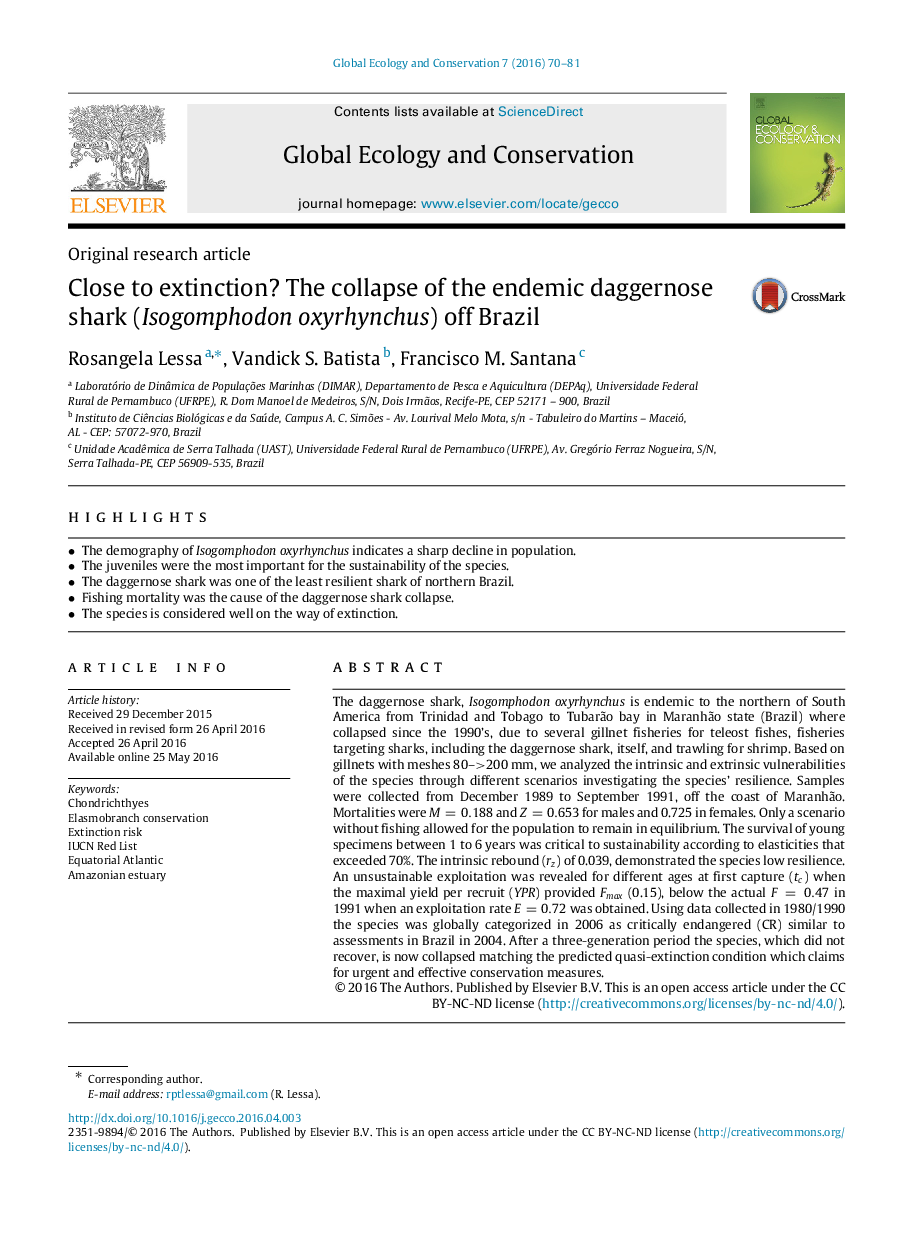| کد مقاله | کد نشریه | سال انتشار | مقاله انگلیسی | نسخه تمام متن |
|---|---|---|---|---|
| 4379457 | 1617660 | 2016 | 12 صفحه PDF | دانلود رایگان |
• The demography of Isogomphodon oxyrhynchus indicates a sharp decline in population.
• The juveniles were the most important for the sustainability of the species.
• The daggernose shark was one of the least resilient shark of northern Brazil.
• Fishing mortality was the cause of the daggernose shark collapse.
• The species is considered well on the way of extinction.
The daggernose shark, Isogomphodon oxyrhynchus is endemic to the northern of South America from Trinidad and Tobago to Tubarão bay in Maranhão state (Brazil) where collapsed since the 1990’s, due to several gillnet fisheries for teleost fishes, fisheries targeting sharks, including the daggernose shark, itself, and trawling for shrimp. Based on gillnets with meshes 80–>>200 mm, we analyzed the intrinsic and extrinsic vulnerabilities of the species through different scenarios investigating the species’ resilience. Samples were collected from December 1989 to September 1991, off the coast of Maranhão. Mortalities were M=0.188M=0.188 and Z=0.653Z=0.653 for males and 0.725 in females. Only a scenario without fishing allowed for the population to remain in equilibrium. The survival of young specimens between 1 to 6 years was critical to sustainability according to elasticities that exceeded 70%. The intrinsic rebound (rzrz) of 0.039, demonstrated the species low resilience. An unsustainable exploitation was revealed for different ages at first capture (tctc) when the maximal yield per recruit (YPR ) provided FmaxFmax (0.15), below the actual F=0.47F=0.47 in 1991 when an exploitation rate E=0.72E=0.72 was obtained. Using data collected in 1980/1990 the species was globally categorized in 2006 as critically endangered (CR) similar to assessments in Brazil in 2004. After a three-generation period the species, which did not recover, is now collapsed matching the predicted quasi-extinction condition which claims for urgent and effective conservation measures.
Journal: Global Ecology and Conservation - Volume 7, July 2016, Pages 70–81
